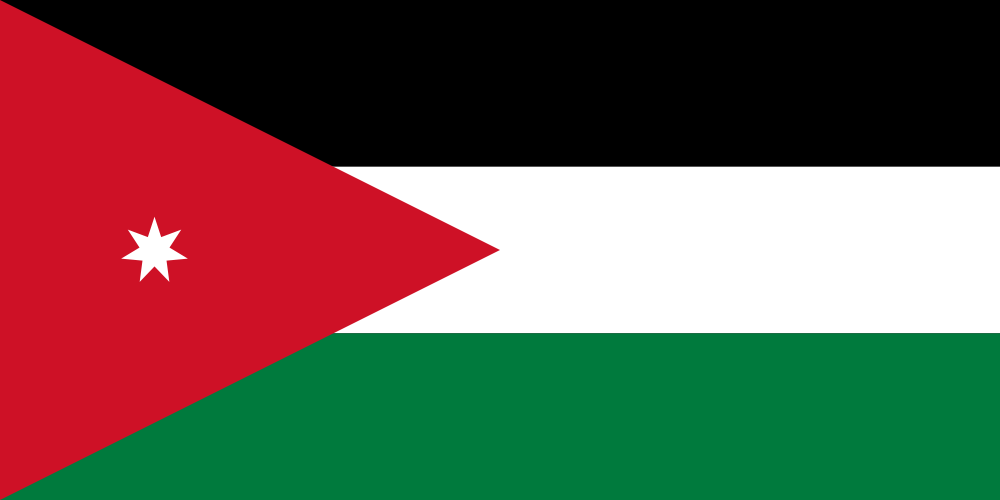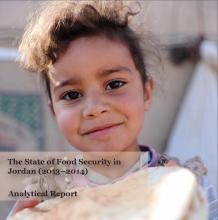 Jordan
Jordan
Jordan is an almost completely landlocked country, with an estimated population of 11.51 million as of October 2023,[1] and 2.5 million were registered Palestinian refugees as of 2022,[2] 660,892 registered Syrian refugees and 30,835 registered Iraqi refugees by the end of 2022.[3] in 2022, more than 90 percent of Jordan’s population is living in urban areas. With a fertility rate of 2.7 births per woman – gradually decreasing from 4 births in 2000– and increasing life expectancy reaching 73.3 years in 2022, up from 69 in 2000,[1] the country’s population below 30 years of age has been shrinking, reaching an estimated 59.3 percent in 2022, down from 68.7 percent in 2000.[4]
Jordan’s Human Development Index (HDI) value for 2021 is 0.720 – which puts the country in the high human development category – positioning it at 102 out of 191 countries and territories. When adjusted for inequality, the country loses 14.3 percent of its HDI value mostly due to inequality in income.[5]
In 2019, Jordan adopted substantial structural reforms to improve the business climate, becoming one of the top 10 improvers out of 190 economies according to the World Bank’s 2020 Doing Business report. Jordan’s efforts focused primarily on strengthening access to credit, implementing digital tax payments, and adopting measures to facilitate resolving insolvency. The ease of doing business score jumped from 56.7 in 2016 to 69 in 2020.[6]
While the recent improvements in the regulatory environment have not yet translated into an increase in domestic or foreign investment, a considerable recovery in exports and tourism narrowed the current account deficit from -6.8 percent of GDP in 2018 to -1.79 percent in 2019, but in 2022 it increased to -7.4 percent.[7] In terms of trade, Jordan’s net trade balance increased by almost two-thirds from -4,113.3 million JD in 2019 to -6821.4 in 2022.[1]
Nonetheless, regional conflicts, the resulting influx of refugees, and the COVID-19 outbreak are having a considerable impact on the socio-economic conditions. Growth remained weak fluctuating between 2 and 4.2 percent 2017 and 2019 but contracted to -1.8 percent in 2020 and then increased to 5.9 and 5.1 percent in 2021 and 2022.[8] Inflation remained broadly contained rising to 4.46 percent during 2018, then decreased to about 0.33 percent in 2020 and 1.35 in 2021,[1] due to a decline in food and imports prices, including oil. According to IMF estimates, fiscal consolidation proved challenging to maintain in 2021, with the overall fiscal deficit amounting to -7.7 and -6.9 percent of GDP in 2021 and 2022 respectively, compared to -4.6 percent in 2018. [7] Weaknesses in tax administration and delays in implementation of fiscal measures have led to a decrease in revenues, with large off-budget expenditures in 2018 and 2019.[6][7] Public debt remained elevated, at a high of 86.9 percent in 2020 and increased to an estimated 89.4 percent of GDP in 2022.[7]
According to the WHO, current health expenditure as a percentage of GDP in Jordan is at 7.47 percent, as a result, out-of-pocket health expenditure accounts for around 30.2 percent of current health expenditure.[9]
Weak economic growth is reflected in challenging labor market conditions. Unemployment climbed sharply from 13 percent in 2015 to 24.1 in 2021, and then it decreased to 22.8 in 2022. Youth in the age group 15-24 and women are particularly hard-hit, with unemployment rates estimated at 47 percent and 31.4 percent respectively, according to the latest data published by the Department of Statistics in Jordan (DoS) in 2022.[1]
Jordan continues to face serious water scarcity. The Ministry of Water and Irrigation set out a National Water Strategy (2016-2025) plan to combat the challenges of water cut-offs and drought and to counter the depletion and deterioration of groundwater quality. The per capita annual water supply has been decreasing in Jordan, from 500 cubic meters in 1975 to 100 cubic meters in 2017, which is far below the global poverty line at 1000 cubic meters per capita, annually. In addition, the recent 2023-2040 strategy is anchored in integrated water resources management to protect and preserve the groundwater aquifers and surface water supplies whereas Jordan is one of the most water-poor countries in the world for renewable freshwater with around 61 cubic meter per capita in 2021.[10]
This overview was last updated in November 2023. Priority is given to the latest available official data published by national statistical offices and/or public institutions.
Sources:
[1] Department of Statistics (DOS). 2023. Statistics topics, Statistical yearbooks, and Jordan in figures [ONLINE] Available at: http://dosweb.dos.gov.jo/ [Accessed 01 November 2023].
[2] United Nations Relief and Works Agency for Palestine Refugees in the Near East (UNRWA). 2023. UNRWA Statistics Bulletin. [ONLINE] Available at: https://www.unrwa.org/what-we-do/unrwa-statistics-bulletin [Accessed 01 November 2023].
[3] United Nations High Commissioner for Refugees (UNHCR). 2023. Refugee Population Statistics Database. [ONLINE] Available at: https://www.unhcr.org/refugee-statistics/download/ [Accessed 15 October 2023].
[4] Population Division of the Department of Economic and Social Affairs of the United Nations Secretariat. 2023. World Population Prospects. [ONLINE] Available at: https://population.un.org/wpp/ [Accessed 15 October 2023].
[5] United Nations Development Programme (UNDP). 2023. Human Development Index. [ONLINE] Available at: https://hdr.undp.org/data-center/documentation-and-downloads; https://hdr.undp.org/data-center/country-insights#/ranks [Accessed 25 October 2023].
[6] The World Bank. 2023. Doing Business database. [ONLINE] Available at: https://datacatalog.worldbank.org/search/dataset/0038564/Doing-Business [Accessed 25 October 2023].
[7] International Monetary Fund. 2023. World Economic Outlook Database [ONLINE] Available at: https://www.imf.org/en/Publications/SPROLLs/world-economic-outlook-databases#sort=%40imfdate%20descending; [Accessed 30 October 2023].
[8] Ministry of Finance. 2023. General government finance bulletin. [ONLINE] Available at: https://www.mof.gov.jo/EN/List/Bulletins_and_Government_Financial_Statements [Accessed 02 November 2023].
[9] World Health Organization (WHO). Global Health Expenditure Database. 2023. [ONLINE] Available at: https://apps.who.int/nha/database/Select/Indicators/en [Accessed 15 October 2023].
[10] The Ministry of Water and Irrigation, Jordan. 2023. Water sector policy for drought management. And the National Water Strategy 2023-2040 [ONLINE] Available at: https://www.pseau.org/outils/ouvrages/mwi_water_sector_policy_for_drought_management_2018_en.pdf; https://www.mwi.gov.jo/EBV4.0/Root_Storage/AR/EB_Ticker/National_Water_Strategy_2023-2040_Summary-English_-ver2.pdf [Accessed 02 November 2023]




